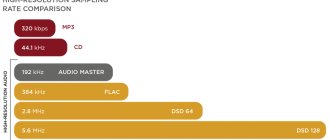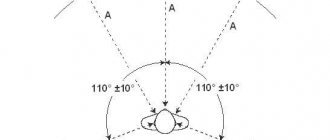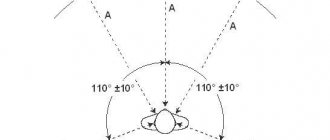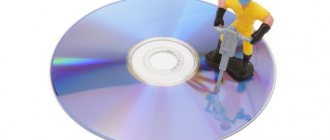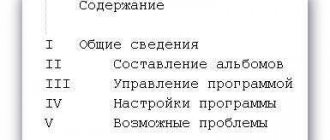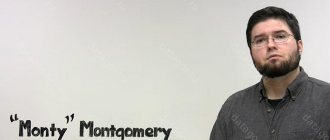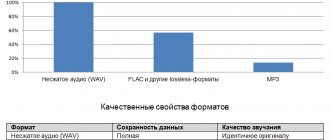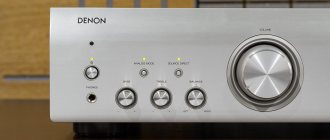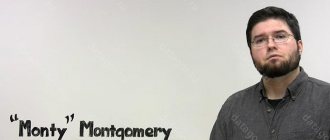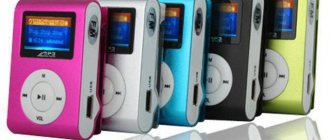SACD vs. DVD-Audio: A Case Study of High Definition Formats
It is impossible to count the number of copies broken in the battles between SACD and DVD-Audio formats. It is also impossible to list the number of opinions about the quality of these formats in comparison with CD-DA (compact disc) and LP (vinyl).
The statistics are not very favorable for new high-definition formats yet. According to the RIAA (Recording Industry Association of America), 0.4 million DVD-Audio copies, 1.3 million SACDs, 1.5 million LPs and 745.9 million CDs were sold in 2003. CD sales peaked in 2000 and are currently in severe decline. Interest in CDs may have waned thanks to the phenomenal steady growth of DVD-Video - 369.6 million, including music DVDs in 2003.
Even today, funny things often happen: in 2004, salespeople in a specialized electronics store asked if the client had a special player for playing a just purchased SACD disc (this despite the fact that the cover of the disc says Hybrid, that is, the disc contains and standard recording in CD-DA format).
Everyone understands that high-resolution formats have more opportunities for transmitting high-quality signals. The only question is: how many more possibilities are there and where can you get this high-quality signal? Is it always present on discs with nice SACD or DVD-A labels? A lot of debate about the quality of formats lies precisely in this area.
The birth of formats
Manufacturers were in such a hurry to introduce new formats to consumers that they made a lot of mistakes at the stage of their implementation, thereby creating a certain attitude of aversion to new media. Namely:
- The first SACDs were prepared using ProTools, the most common professional hardware and software package operating in PCM format. To process a DSD stream at the mastering stage, it was necessary to convert it to PCM, make changes and convert it back to DSD. If, with proper high-quality conversion of DSD to PCM, the recording does not suffer much, then at least all the advertised theoretical advantages of Direct Stream Digital (i.e., a direct signal path from the microphone in the studio to the listener’s speakers) are clearly called into question. In addition, the ProTools complex in those years was based mainly on hardware processing, with algorithms designed for the quality of the CD-DA output format. If 16-bit 44100 kHz PCM sources were used as master phonograms, the sound quality of such a SACD disc could be worse than a similar recording on CD.
- The first DVD-A also could not demonstrate miracles of quality. Despite the fact that most of them were created in 24-bit 48 kHz resolution, some were also in 20-bit 48 kHz. But the format evolved, first 24-bit 96 kHz stereo tracks appeared on DVD-A, and then multi-channel 24-bit 96 kHz tracks. Modern DVD-A Advanced Resolutions have a 24-bit 96 kHz multichannel track and/or a 24-bit 192 kHz/96kHz stereo track, and, importantly, they are usually made using 24-bit 96 kHz/192 kHz master tapes, processed on modern equipment with increased resolution (supporting 64 bit 384 kHz), which significantly affected the final quality.
So which format is better?
The CD-DA format (PCM 16 bit 44100 Hz stereo) is already outdated; its limitations do not allow it to reach the level of today's demands of audiophiles and music lovers. Of course, we can't discount the incredibly large CD-DA market that SACD and DVD-A can't even come close to. But more recently, the same thing happened in comparing the market for video cassettes and DVD-Video discs. The widespread use of the CD-DA format and its ease of use do not suggest that a future VHS format will be possible for it in the near future. But, nevertheless, its significant limitations, such as frequent clipping (signal limitation) due to the desire of the sound engineer to achieve maximum dynamic range and limited spectrum (a little later we will say what this leads to), as well as the emergence of interfaces that support high-resolution formats in unchanged digital form for transmission between devices (i-link, HDMI, Denon-link, M-link and so on), suggest that in the near future the transition of CD-DA to the mass market, where mp3 feels great, freeing up space among audiophiles for DVD-A, SACD and the Microsoft-promoted HD-DVD format (WMV9 Pro, supporting 24-bit 96 kHz multi-channel audio WMA9 Pro). The question of comparing multichannel sound and stereo, their advantages and disadvantages is a topic for a separate discussion.
If correct
CD playback (as, for example, done in devices from some High-End manufacturers) and
incorrect
SACD and/or DVD-A, the sound of the former can be considered higher quality even in double-blind testing (ABX - eliminates the placebo effect, or the influence of the listener’s self-hypnosis to the final result). This, again, is a source of debate about the quality of high-definition formats. Double-blind testing is not ideal, however, it allows for sufficiently clear conditions to obtain statistically reliable results. It is strongly recommended to use the free PC ABX program or, again, the free ABX plugin to the well-known Foobar 2000 program, to really make sure whether we really hear the difference (and not just convince ourselves that it exists), and only then look for the reason . Try recording a couple of fragments from a CD (it's better to rip the tracks) and from a similar DVD-A and, using ABX, you will almost certainly guess the difference (detailed data).
An interesting practical study of the quality of DSD SACD and PCM DVD-A was conducted by Craig Anderson. Despite the fact that he came to the conclusion that PCM 24/192 is superior in terms of signal representation accuracy, the oscillogram of the 10 kHz square wave shows the identical results for the PCM and DSD formats. The blurring of the DSD signal shape is explained by the presence of ultrasonic noise; the averaging of the image over time occurred due to the latency of the oscilloscope screen pixels.
Processing difficulties
It should be noted that the DSD format is more complex for processing in terms of bass management and phase delay adjustment to align the sound at the listening location, as well as for acoustic calibration of the acoustics-listening room system. Everyone was waiting for a DSP processor for DSD streaming in household appliances, SONY announced some new chips (CXD9776Q and CXD9722Q) using DSD processing algorithms in its ES Series Receivers Technical Background brochure regarding the STR-DA9000ES, but... in the end, according to the service manual, all these adjustments are carried out in PCM (in 9000 models). As you know, this top model does not have a calibration of the acoustic response of the room, although it could well be, given the processing in PCM and the presence of similar functions in its closest competitors Pioneer, Yamaha and Denon (a similar adjustment is present in the 3805 model, and the new top model 5805 with similar adjustment).
Thus, at the moment, the DSD format is less interesting for equipment manufacturers from the point of view of the availability of the necessary modern solutions, and even Sony itself is not yet ready to present to the market a full range of DSD signal processing in its original form at the level of consumer products for non-professional purposes.
Analogue vs. Number
Vinyl as a source of information at the stage of CD-DA implementation was deliberately discredited as a quality source of information, and mass brainwashing occurred due to the marketing funds of companies interested in promoting the CD-DA format. Even today, when played correctly, the LP (vinyl) format is not only ready to compete in terms of sound quality with CD-DA, but, according to many, is often superior to digital. What is the reason?
Some measurements made by audiophile enthusiasts suggest that the reason is a wider spectrum and, despite the prevailing opinion about the 60 dB limit, there is still sufficient dynamic range. Take a look at Chris Johnson's (Sonic Frontiers guru) measurements of dynamic range on the LP. There are also measurements of LP spectrum limitation made by Australian audiophile and equipment reviewer Chris Tham. As you can see, vinyl is close to CD-DA in terms of dynamic range, and significantly exceeds the latter in terms of frequency band. It is recommended to read the entire article Spectral and Dynamics Comparisons of LPs vs digital formats.
Another important point is that we must not forget that analog originals for subsequent recording on LP were processed, as a rule, on analog equipment, which had almost reached the peak of its development. Digital hardware for CD-DA was very imperfect - low DSP resolution for processing (often only 24 bits for a 16-bit CD-DA signal, which resulted in rounding of the 32-bit output number during multiplication operations, and, as a result, digital artifacts in the output signal), low sampling rates, lack of dithering and noise-shaping, only later added to the CD-DA arsenal, high jitter levels in digital audio tape recorders. Some audiophile studios have even decided to return to analog mastering systems.
All problems of this type remained recorded on CD, which is why their quality differs so much from copy to copy, although it seems that “a number is a number.” However, the same or essentially similar shortcomings are associated with early DVD-A and SACD, as is known.
Why do we need frequencies above 20 kHz?
We have reached an important stage. In various forums, in disputes about formats and their quality, the same question was asked: if a person is not able to hear frequencies above 20-21 kHz, then, having a sampling frequency of 44.1 kHz for CD-DA, in accordance with theory, there should be no problems. Why do we need 50 kHz, 70 kHz and even 96 kHz if we won't hear them anyway? And second. If our speakers, according to their passport, have a bandwidth of 20 Hz - 20 kHz at a level of -3 dB, then why do we need DVD-A or SACD? Speaker speakers will not be able to reproduce the required spectrum, and, moreover, intermodulation components of ultrasonic frequencies can enter the audio region and distort the original signal. Wouldn't it be better to just not have these ultrasonic components?
Let's take a closer look at the theory. The Kotelnikov-Shannon theorem on the minimum permissible sampling frequency speaks of the need for a twofold superiority of the sampling frequency over the boundary frequency of a non-finite continuous periodic function in order to correctly restore an analog signal from the discrete samples obtained as a result of mathematical expansion into a Fourier series. It is important to understand that the theorem does not mean that when digitizing an arbitrary signal of infinite spectrum and finite duration, it is possible to accurately restore that spectrum signal that lies below half the sampling frequency. In reality, problems will inevitably arise: aliasing - the penetration of parasitic components into the useful signal above the sampling frequency, or distortion from the use of analog filters when filtering the useful signal with high-order filters.
Here's what respected member of the audiophile community and talented engineer Nelson Pass has to say about ultrasonic spectrum components:
“Although the capabilities of human hearing are extremely low at frequencies above 20 kilohertz, the roll-off of the ultrasonic spectrum creates phase and amplitude effects in the audible range, for example, a simple roll-off (6 decibels per octave) at a frequency of 30 kilohertz gives a phase lag of about 9% and a roll-off in signal amplitude of 0.5 dB at 10 kHz. The effects may not be as significant, but their audible noticeability is undesirable in equipment whose performance is judged by the neutrality of its sound” (original). Thus, knowing the sensitivity of our ear to phase distortions, we can assume a significant reduction in the level of such distortions in systems with a wider spectrum of the reproduced signal (including high-quality LP reproduction).
The second point is that if, when trying to record the spectrum of such instruments as a trumpet, in the original signal we limit the anti-aliasing filter for the spectrum of a CD signal in comparison with the same filter for a DVD-A 24 bit 96 kHz signal, then the difference will be in the phase distortions of the original compared to the recording will be significant even before it is sent to the speakers. Speakers (properly designed) have a fairly flat HF signal roll-off characteristic, depending mainly on the design of the tweeter, and therefore introduce less significant phase distortion than a filter with a sharp frequency response roll-off, which, in particular, is the CD-DA format for signals with broadband spectrum.
All this calls into question the validity of choosing a sampling frequency of 44.1 kHz for accurate signal transmission in a 20 kHz bandwidth. At the same time, upsampling to 96 or 192 kHz and preserving more bandwidth for smooth analog filtering is an example of good engineering and, fortunately, is not at all a difficult task, since modern converters in most cases operate in oversampling mode. By the way, this idea was also very actively used by SONY when promoting the SACD format.
Attempts to analyze the spectrum of DVD-A and SACD
What does science say about the difference in sound between DVD-A and SACD compared to CD-DA and the reasons for the presence or absence of such a difference? Let's turn to the presentation of Dr. Griesinger, along with Jim Fosgate, one of the main “engines” in the theory of multi-channel audio, the man who gave the world the Logic7 Lexicon system.
A respected professor has conducted serious research and discovered that DVD-A and SACD discs often do not contain the same widely advertised ultrasonic images. He suggested that we hear the difference due to intermodulation components in the tweeters falling into the sound region. The professor refers to the work of Karou and Shogo “Detection of Threshold for tones above 22kHz”. Yes, indeed, we do not hear ultrasounds above 20 kHz. But the above work was carried out in relation to signals with even harmonics, and audible odd harmonics produced due to the nonlinearity of the transmission in the device. With the elimination of nonlinearity and, accordingly, odd harmonics (and in reality, odd harmonics only indicated the appearance of intermodulation products due to this nonlinearity in the audio domain), ultrasonic images ceased to be audible (that is, not only odd harmonics disappeared, but also intermodulation components). This is as it should be, since we do not hear sinusoidal ultrasonic signals.
The professor in his presentation describes his struggles with an audio card for experiments, which in the end still turned out to be not entirely suitable if you look at the noise level in the measurements. It's a pity, with a good specialized map the result would apparently have been different, allowing other assumptions to be made.
Signals with a level of –3 dB and a frequency of 20 kHz and 25 kHz were fed to the speakers. Not to expect intermodulation and, in some cases, clipping at such levels is simply a miracle, you need a professional-level device (even my old Audigy produces clipping at levels of -6 dB and such frequencies). Pay attention to the noise floor visible in the spectrograms in the HF region. For the combination player + professor's audio card, it reaches -90 dB on the spectrum! Result: conclusion about audible intermodulation distortion products from the amplifier (not from the speakers).
Further, the professor's research showed that on borrowed SACD and DVD-A discs, in particular Diana Krall and Steely Dan, there are NO ultrasonic images above 23 kHz, and interestingly, the threshold noise level in FFT analysis on DVD-A Steely Dan reaches -72 dB (strange DVD-A, whose noise is several tens of decibels worse than the limit for CD-DA), and for SACD the noise level is slightly better, it still reaches -78 dB! It’s somehow unclear, but we HEAR the high-quality sound of these discs. The respected professor's work gave rise to the idea of repeating the measurements, taking the same off-the-shelf SACD and DVD-A discs and adding others to them.
Repeat measurements
The author of this article carried out qualitative measurements with a professional sound card of the highest category Lynx L22 (a two-channel version of the Lynx Two sound card), which is perfectly suitable for such measurements (the purpose of “measurement” in particular
). The results obtained differ somewhat from those presented in Dr. Griesinger's presentation. We can make some assumptions as to what is the reason for the differences.
Repeated measurements for the same DVD-A and SACD produced undetectable ultrasonic patterns in the range from 25 kHz to >35 kHz and at levels down to -50 dB:
Spectrogram of a fragment of DVD-A Steely Dan "two Against Nature", blue - multi-channel mode, yellow - stereo Statistics of DVD-A Steely Dan "two Against Nature", left - multi-channel mode, right - stereo Spectrogram and spectrogram of a fragment of SACD Diana Krall, On the spectrogram: blue - multichannel mode, yellow - stereo On the sonogram: on the right - multichannel mode, on the left - stereo
Moreover, the lower noise limit visible on the spectrograms is about -132 dB for a multichannel track. The assumption about the reason for such significant differences lies not only in the quality of the audio card, but also in the filtering of the output signal by the DVD-A/SACD player, as well as in the difference in the recorded signals on multichannel and stereo tracks.
Indirect confirmation of this statement are measurements carried out in the laboratory of Stereophile magazine, which revealed the relative similarity of the CD signal on a hybrid track and the SACD stereo signal for the famous multi-channel SACD “The Dark Side of The Moon”. It can be seen that they are virtually identical, but the multichannel track is already noticeably different from the stereo one (two pictures illustrating what has been said):
Spectrogram of the SACD fragment “Dark Side of the Moon”: red - multichannel mode, yellow - stereo right - multichannel mode, left - stereo On the sonogram: right - multichannel mode, left - stereo On the spectrogram: red - multichannel mode, yellow - stereo
The measurements were made as accurately as possible - samples of the corresponding signal peaks and levels were matched (that is, one of the signals was amplified in Adobe Audition, processed with a resolution of 32 floating bit point 96kHz) and then a comparison was made.
The situation is similar for another multi-channel SACD James Taylor "Hourglass" 1997, the song "Line 'Em Up" and for all the others. The picture shows how different the signals are on the tracks - the beginning of the same fragment in the channel of the corresponding level:
Fragment of SACD James Taylor “Hourglass”, comparison of the signal from the linear outputs of the player and receiver, in multi-channel and stereo modes
Since it's hard to imagine that THX processing adds any non-existent ultrasonic signals to real multi-channel tracks, they do appear to be present on the discs tested twice. We come to an important statement - the problem is not in the formats, but in their correct reproduction! This point is confirmed by the measurements taken.
Many thanks to Professor Griesinger for his work, without which this article would not have existed. On his website you can read a lot of useful information about the theory of multichannel sound.
Dependence of quality on playback method
Indeed, until now there was an opinion, strongly supported by marketing people from the SACD camp, that DSD signals are most correctly reproduced through a simple analog filter (this allows you to get rid of the “unnecessary” additional conversions from digital to analog), or using delta-sigma digital -analog converters. The result of such playback quality, using analog filters in relatively high-quality PCM1738 DACs, is visible in the picture:
Fragment of SACD James Taylor “Hourglass”, yellow and on the left - a signal in DSD format directly to the DAC of the PCM1738 player, blue and on the right - transmission via i-Link and then PCM and the DAC of the PCM1704 receiver
High-frequency noise produces intermodulation interference in the audio range, plus phase distortion due to a sharp cutoff of the spectrum at 22 kHz, making it possible to guess the difference 19/19 during double-blind testing, that is, with 100% probability. Note that the signals were matched in level and at frequencies up to 18 kHz they were visually almost identical (the same sample is shown in the picture).
Thus, we still hear ultrasonic images, and the level of noise, which is generally considered inaudible for SACD signals, plays a role, since these noises are of a high level, giving products from the intermodulation of components in the audio range (of the same random order as noise itself) can affect the clarity of the sound and the perception of low-level reflection signals.
How to play SACD correctly?
How to play SACD correctly? We can agree with Dmitry Andronnikov, who put forward the hypothesis of converting the DSD signal to PCM and then reproducing such a signal through multi-bit DACs. This is exactly the approach implemented in the AX10 (49TX) receiver and is subsequently used in all top-end Pioneer receivers. What’s the matter, why do we get better quality with seemingly unnecessary “additional transformations”? In reducing distortion (as paradoxical as it sounds) due to such additional transformations. The real point is in DSD->PCM converters (usually SM5816 or in new SM5819A devices are used for this purpose), which are actually high-quality digital filters and, operating at frequencies of 2Fs and 4Fs in devices known to us, filter out all SACD RF noise at the level –130 dB, preventing this noise from creating intermodulation products in the audio range and also “overloading” the operational amplifier in the I/V digital-to-analog converter with RF components. By using a digital filter operating in oversampling mode before the DAC, we filter out the remaining RF interference from the DSD stream, achieving the same quality for reproduced SACD signals as for high-resolution DVD-A. The top-end Pioneers use multi-bit PCM1704 as a DAC; the top-end Yamaha Z9 receiver uses a new multi-bit delta-sigma DAC PCM1792, which allows you to compare playback modes through DSD->PCM conversion or through an analog filter, as was done for PCM1738, but the result is after the measurements taken already predictable.
Confirmation of Dmitry's hypothesis is the fact that in the new digital top receiver Sony STR-DA9000ES all signal processing is in PCM format, DSD circuits after DSD->PCM conversion are simply not used and the corresponding pins of the microcircuits are soldered to ground (DSD to PCM conversion is handled converter SM5819A, relabeled by Sony as CXD9742).
Note the difference in noise levels and spectra when playing multi-channel tracks from the same discs and from stereo tracks. It can be seen that stereo tracks are usually made from stereo sources, often with a bandwidth limit of 22 kHz and a noticeably higher noise level. Multichannel tracks, usually completely remastered or re-recorded from the 24-bit 96 kHz original master tapes, feature a completely different level of signal quality. At one time, it was a discovery for many that there was a significant difference in the quality of playback of SACD multi-channel Dark Side of The Moon using multi-channel and stereo tracks (SACD in both cases), but after taking measurements we already know what’s going on.
Thus, the use of multi-channel systems and triphonic-type speaker configurations becomes a much more interesting event than previously thought, but more on that another time.
Listening
Comparative listening to a wide range of DVD-A and SACD recordings on a set of fairly high-end equipment* does not allow us to give preference to any of the formats; the difference significantly depends on the quality of mastering, and, in fact, does not depend on the format as such. Taking into account the above analysis and the theoretical dynamic range available to DVD-A, we can make the assumption that the DVD-A format has not yet realized all its capabilities in modern equipment, while SACD is already close to the maximum of its capabilities. And, nevertheless, today these capabilities make it possible to obtain sound quality that is quite sufficient to satisfy the needs of audiophiles with the correct approach.
* Transmission of DVD-A and SACD signals via i-Link in full resolution, further jitter suppression using PQLS and beyond (DSD signal is converted to PCM in SM5816 converters) through High-End digital filters DF1706 in x8 oversampling mode (or x4 for 192 kHz signal) to multi-bit PCM1704 DACs using high-quality OPA627 operational amplifiers in a current-voltage converter and then through a Pioneer AX10i power amplifier (49TXi) to M&K 150THX speakers with a M&K MX-350MkII subwoofer.
Prospects for formats
We have already summed up the results; it remains to say a few words about the new mastering systems, which allow us to achieve significantly higher quality for both SACD (DSD) and DVD-A. With the release of the SADiE system, based on the E-chip idea, all mastering of DSD streams is possible without conversion to PCM, thus eliminating the problem of reduced disc quality. We have extremely scant information about this chip, but nevertheless the general principles are already clear. For DVD-A authoring, as a rule, DiskWelder Chrome is used, which supports a maximum resolution of 24-bit 192 kHz and MLP compression if the appropriate program is available (Surcode MLP is currently known); the initial music files can be prepared in any professional multi-channel audio editor, such as like Pro Tools, Steinberg Nuendo and others.
With the release of the relatively affordable DiskWelder Bronze and Steinberg Wavelab 5.0, the DVD-A format becomes available to a much larger number of users, and, given the new developments in DSD (Sonic Studio DSD1.1), which currently only work on the Macintosh platform, soon SACD will be more or less accessible format.
SACD market. Myths are being dispelled.
More recently, we considered Super Audio CD (SACD) as a technological innovation, and now about two thousand different music albums have been released on these storage media. The number of devices capable of reading SACD discs is growing progressively and currently amounts to several dozen. Why such a rush, given the fact that there is a similar standard, DVD-Audio, which can also reproduce high-quality multi-channel audio? Let's try to answer this question.
Statistics and analysis
On April 24, a very interesting document was published on the HighFidelityReview website, which presents the results of RIAA research on the total amount of audio information released on various types of media. Let me give you the most interesting excerpt from it, namely the total number of copies released in each year and the corresponding dollar equivalent (net sales income):
DVD Audio Discs:
- 2001 - 0.3 million copies or $6 million in dollar equivalent;
- 2002 - 0.4 million copies or $8.5 million in dollar equivalent;
- 2003 - 0.4 million copies or $8.0 million in dollar equivalent.
Super Audio CDs:
- 2003 - 1.3 million copies or $26.3 million in dollar equivalent.
Vinyl records:
- 2001 - 2.3 million copies or $27.4 million in dollar equivalent;
- 2002 - 1.7 million copies or $20.5 million in dollar equivalent;
- 2003 - 1.5 million copies or $21.7 million in dollar equivalent.
Simple audio CDs:
- 2001 - 881.9 million copies or $12,909.4 million in dollar equivalent;
- 2002 - 803.3 million copies or $12,044.1 million in dollar equivalent;
- 2003 - 745.9 million copies or $11,232.9 million in dollar equivalent.
Let's analyze it. The number of regular CDs is steadily falling, while the number of DVD-Audio products is growing. Comparing the 2003 figures in terms of quantity, 0.4 million DVD-Audio plus 1.3 million SACDs versus 745.9 million regular CDs is a very small portion of the total, about 0.2%. And if we count revenues, then SACD exceeded CD by more than two times and DVD-Audio by more than three times.
This is such an interesting picture.
One gets the impression that multichannel audio will not linger on DVD-Audio and will immediately migrate to SACD. There are all the prerequisites for this. The SACD standard is being promoted very actively. For example, at the recent Cannes Film Festival, Universal Music presented about 150 titles on SACD discs. And at the end of April '04, the 2000th album on these media was released, which was Twentysomething, Jamie Cullum.
As for playback devices, their number is increasing day by day, and if earlier we talked about several models from manufacturers SONY, Philips, Pioneer, now they have been supplemented by brands such as TEAC, DENON, Integra Research, Bel Canto, Marantz, KRELL , Linn, Yamaha, Micromega, Onkyo, etc. The number of manufacturers and models is growing almost exponentially - the standard has taken root.
If you carefully look through the modern press on new models of DVD players, you will come across the fact that almost every new product has built-in support for SACD reading.
The price range for SACD players is quite large - from $200 to $13,000, depending on the functions and configuration options. This could be a regular portable DVD player with SACD reading capabilities, or it could be a powerful complex with a multi-disc changer, software control, powerful amplifiers and a high-quality multi-channel speaker system, plus the implementation of reading hybrid and/or dual-layer discs. And if you add wireless radio communication for connecting with a projector or computer...
Why should the RIAA be so happy?
Surely each of you has heard about losses in the field of copyright, expressed in the possibility of digital copying of CDs and DVDs, as well as the distribution of music on the Internet through MP3 files. In the above document it was necessary to put in the column: losses from MP3 and pirates. I think a very round number would be added there. At the moment, digital copying of SACD is impossible; almost all reading devices even use a special “plug” for the digital output - DTCP - an additional digital copy protection technology. And, in principle, this is the main distinctive feature of the new standard, which undoubtedly plays into the hands of copyright defenders.
As for quality, even in the DVD-Audio version we have sampling rates of up to 192 KHz with 24-bit quantization and the number of channels - 5.1. This is already beyond the limit of quality perceived by humans. I will not present Kotelnikov’s theorem. I don't think anyone in a dark room can tell if SACD or DVD-Audio is playing. Unless it’s not a room, but an ideal professional studio, and even then I’m not sure the good result of such a comparison. But copyright protection is a serious aspect. I would even say that he is key. Now, based on the above, let's look at the big picture again. Manufacturers of DVD players are actively introducing SACD into their new models. As of 2003, SACD discs were released three times more than DVD-Audio.
Hmmm... I hope I'm wrong
There are doubts about the DSD algorithm, which is behind the SACD technology, which allows you to read single-bit values with a sampling frequency of 2822.4 KHz (64 times more than a CD) on the principle of a vinyl record with tracks.
(!!!) The description of the operating principle of DSD is quite reminiscent of the description of the operation of conventional sigma-delta DACs (DAC - digital-to-analog converter), which are used in standard modern digital audio equipment (for example, in audio cards, CD and DVD players).
Essentially, this is how they (sigma-delta DACs) work - their design includes a circuit for issuing reference charges, the input of which is supplied with a one-bit stream obtained by transformation and switching to a multiply increased sampling frequency (64 times and higher). It turns out the same pear only in profile!
That is, the developers explained the operating principle of the sigma-delta DAC differently, presented it as a new technology and put a plug on the digital output. It turns out that this is so... And, most likely, even in an ideal studio the listener will not hear the difference between SACD and DVD-Audio. Because it probably cannot exist technologically.
SACD player models
After a minute of fun, let's get more serious and review modern models of SACD players. Even if my assumption is correct, the industry will still push with its weight and make a generally accepted standard out of everything. As part of this review, I will present only a few modern models, or rather, two inexpensive ones produced by SONY, on the basis of which you can already get a general idea that SACD technology is not so expensive.
Sony DVP-NC685V ($249.99)
Excerpt from the specification:
- Five-disc DVD/CD/SACD changer.
- Video playback: DVD-RW/-R (VR and Video modes) DVD+RW/+R
- 12 bit 108 MHz video DAC.
- Audio playback: SACD Multi-Channel/MP3/CD-R/CD-RW.
- DAC 24-bit, 192 KHz, supports Dolby® Digital and dts® Optical/Coaxial Output
As we can see, there is a standard hybrid of a DVD player with the ability to support SACD. The price is very small.
Home complex Sony DAV-C450 ($399.99)
- Five-disc DVD/SACD™/CD changer
- The total power of the speaker system is 350 W (five 80 W speakers and a 100 W subwoofer). I don’t know how they counted it.
- Playback: CD-R/RW, Super Audio CD
- Digital amplifier S-Master
- Supports multi-channel standards: Dolby® Digital, dts® and Dolby Pro-Logic®
- Digital input for satellite TV.
- Tuner for 20 FM + 10 AM stations.
- 2 audio inputs/1 audio output/1 Component/Composite/S-Video output
- Programmable remote control.
Prices taken from the Sony Electronics website.
As you can see, Sony offers very inexpensive solutions. For example, a player with a changer for five discs of various standards plus a 5.1 speaker system costs only about $400. Although if you see devices that are much more expensive, their price will also be somewhat justified. We can also talk about a serious range of prices in this segment. The market still needs to settle. I recommend visiting a Russian-language site dedicated to this topic.
conclusions
Everything is debatable for now. If music producers refuse to release DVD-Audio in favor of SACD, then the latter has every chance of occupying the niche of the highest quality modern audio media. There is another interesting point here. Most likely, SACD will not become a computer standard, or manufacturers of these devices will need to provide a separate analog audio output, protecting digital streams. Moreover, such an output, as you understand, must be multi-channel.
SACD player Sony SCD-XA5400ES and AV receiver Sony STR-DA5400ES
According to tradition, at the end of the year, the Moscow representative office of Sony organized a demonstration for journalists of the next line of AV components. Quite unexpectedly, among them was the unique SACD player SCD-XA5400ES, which was not originally supposed to be supplied to the Russian market. And it’s right that the company changed its decision - this source fits perfectly with multi-channel receivers, which we are already selling in full swing.
SACD player Sony SCD-XA5400ES and AV receiver Sony STR-DA5400ES
COMPONENTS
- Blu-ray player Sony BDP-S500 (RUB 19,900).
- Front speakers Monitor Audio Gold Reference 20 ($2300).
- Central channel Magnat Supreme Center 250 (2500 RUR).
- Rear Magnat Monitor Supreme 200 (RUB 5,100 pair).
- Active subwoofer Jamo Sub 300 (RUB 10,800).
A somewhat strange combination, isn't it - an audiophile player and a receiver for home cinema? Yes, but only at first glance. The main feature here is that the DSD stream is transmitted from the source via an HDMI cable and decoded by the receiver's sound processor into a multi-channel audio signal. This is a very smart move that allows you to solve several problems at once. Firstly, the HDMI interface is bidirectional, i.e. supports the exchange of information between connected devices. In this case, their communication is used to synchronize the transport and decoder, which radically reduces jitter and the sound becomes more “analogue”. This is especially important for SACD, since the format was intended as a non-digital alternative to CD-Audio. Secondly, decoding in the receiver can be done more efficiently, because in the new Sony line this important task is assigned to 32-bit Sharc floating-point DSPs. It is irrational to install such processors in a player - their computing power will be used only by a few percent. To receive a DSD signal, Sony receivers have a special HDMI input, which I will discuss below. And finally, the company has made an important strategic step - it is possible that now SACD can exit the narrow audiophile niche into the vast market of cinema components. The player is already offered by a huge number of online stores specializing in AV receivers and 5.1 acoustics.
Of course, the SCD-XA5400ES can also be used as a standalone source, but only a two-channel one. The decoded signal from SACD is fed to analog outputs, both regular and balanced XLR, and for CD there are also digital outputs - coaxial and optical. Over HDMI, the DSD or PCM signal is transmitted uncompressed, and jitter is suppressed by the HATS (High-quality Audio Transfer System) system developed by Sony for the iLink interface. Now it has and provides double buffering of data. At the source, the read information is written into a 16 MB SD-RAM memory and only then sent to HDMI. In the receiver, it also first goes into the same buffer and only then is processed. The process occurs with a variable bitrate (the system itself selects the optimal value), but absolutely synchronously in the transmitter and receiver thanks to a common clock generator. HATS allows you to transmit data from six independent channels in one stream with minimal time errors. In addition, the requirements for the quality of transport are reduced, which allows some companies, if they have a buffer, to even use computer drives.
The design of the SCD-XA5400ES is typical of ES series components - a curved front panel, recessed buttons and a large matrix display. There is an adjustable headphone output and a round shuttle for easy disc navigation. The device is heavy - more than 10 kg.
In terms of parameters, capabilities and control algorithm, the STR-DA5400ES receiver is very close to the 5300 model, which I talked about a year ago (https://www.salonav.com/arch/2008/02/078.html). So I will dwell only on the fundamental points that distinguish the new device from the mass of similar products. As noted above, one of the HDMI inputs (there are six in total) is optimized for receiving audio signals. Unlike the others, it is not built on a standard Silicon Image chipset, but on chips specially developed by Sony with higher performance and a shorter signal path. In addition, this interface (labeled “Input 5” on the rear panel) has a more advanced power system. Of course, any other source can be connected to this port, incl. video.
There is another very important difference between this receiver and the previous version - the presence of two Genesis FLI8668-LF video processors. They feature Faroudja DCDi Cinema technology, which allows you to increase the resolution of a standard 480i/p, 576i/p signal to 720p, 1080i and 1080p, as well as convert interlace to progressive. In addition, the processor has an MPEG noise suppressor and an Advanced Color Management function that improves the naturalness of color reproduction. The second chip is designed to convert the signal supplied to zone B, i.e. Now viewers in both rooms will see the highest possible image quality. Both outputs support wide-gamut video (Deep Color, xvColor or xvYCC) and 24p cinematic standard. Let me remind you that in the STR-DA5300ES the picture could only be supplied to the auxiliary zone in its original resolution. The paths have the same parameters as last year's model (216 MHz/11 bits), but a lower noise level. It is possible to work with two independent sources, and the second picture can be displayed on the screen in a separate window, even if the TV does not have multi-screen modes.
Something new has appeared in the sound path. Not only does it now support Dolby TrueHD and DTS HD Master Audio, but it can also upscale any input signal, including low-bitrate mp3 (DMPORT input) and CD-Audio (SPDIF and HDMI inputs), up to 24-bit/192 kHz. This audio scaler, branded DLL (Digital Legato Linear), is implemented on two 32-bit DSP Sharc EX3 and EX4, which are also responsible for all other conversions. As with earlier models, these chips are mounted on a separate board and soldered using solder ball technology. It allows you to shorten the printed circuit conductors on the board and thereby increase performance.
The STR-DA5400ES pioneers the new Neutral-THX Surround decoding algorithm, capable of converting any 5.1 or 7.1 surround format to two-channel stereo. Neutral-THX Surround is already used by many radio stations because it mixes with less loss of spatial information than other similar systems.
DCAC (Digital Cinema Auto Calibration) has also been slightly improved - the equalizer is still a third-octave, but the accuracy of measurements in the bass area has been significantly increased. The new calculation algorithm more effectively eliminates humps and dips that occur in the room at lower frequencies. And, of course, it is worth mentioning the Matching Pairs setting mode, which levels out the difference between the speakers working in pairs. For example, if the right and left front speakers differ in sensitivity and frequency response (and this sometimes happens), then the system itself will introduce the necessary correction.
DSP programs offer all sorts of sound field configurations, from Digital Concert Hall to Portable Audio Enhancer. I won’t list them all, it would take up too much space. The bass manager provides step-by-step setting of the cutoff frequency for the active subwoofer within the range of 40 - 200 Hz.
The final amplifiers of the III generation are analog, operating in class AB, with a power of 7 to 120 W (at 8 Ohms, THD 0.09%) and with a record wide bandwidth - 160 kHz. Since the video path allows you to organize a full-fledged auxiliary zone, it also needs to be sounded with high quality. To do this, we put a couple of decent speakers in the next room, and designate the corresponding channels in the menu as ZONE 2. Now you can watch a movie there or listen to music from an independent source, controlling the receiver from a small remote control via an IR repeater. The setup is facilitated by a separate menu for the second zone, which is displayed on the TV screen. In general, it turns out to be a full-fledged multiroom.
The main remote control, from which all functions and modes of the receiver are available, learnable and programmable for macro commands. It is not bulky, so it is convenient to work with it. In addition to receivers, it can control other equipment connected via HDMI via the proprietary Bravia Sync interface.
Since the STR-DA5400ES, in addition to home theater, can also work equally well in an audiophile system, the listening was carried out in two stages - first with the SCD-XA5400ES described above, and then with the Sony BDP-S500 Blu-ray player. Both sources were connected with a high-quality HDMI cable to input No. 5. All sound programs are disabled, tone controls are in the zero position.
We start with the Showcase disc [1], which contains works of various genres. They were recorded with very high quality, mixed through a tube mixer and transferred to DSD directly from the analog master tape. The sound is very light, airy, and even on two-channel tracks the spatial picture has a third dimension. The presence of “digital” is minimal, as in a solid high-end set. However, here the impression is somewhat different - it doesn’t seem to be an analogue, but it’s clearly not a CD either. Compared to vinyl, everything is more correct in terms of tonal balance and dynamic range and is more open and free than on a regular CD. The multi-channel version of “Money” [2] surprised with the precise positioning of literally every single note; it seemed that virtual sound sources were located on the surface of the sphere within which the listener was located.
The panorama is so unusual that at first it can cause a feeling of discomfort due to the abundance of information. But you get used to it in just a few minutes.
But it is preferable to listen to CDs through a regular coaxial or optical cable. And even better - via linear input in Analog Direct mode. Via HDMI, the sound loses integrity and composure, the sound canvas seems to become thinner. It is possible that the HATS path with two buffers is not optimal for the “slow” PCM 16/44.1 stream.
The receiver interfaces perfectly with the Blu-ray player both in audio and video paths. The 1080p signal is switched without loss, the scaler for both zones works flawlessly. True, on-screen menus can now be taken from either composite or component outputs - there are no S-Video jacks in the STR-DA5400ES model.
The sound of soundtracks is typical of Sony - dense, intelligible, with precise positioning and smooth movement of sources. The number of presets seemed excessive to me; I can’t imagine who these days might need, for example, Hall or Stadium modes. This is more of a tribute to tradition than an urgent need.
The receiver perfectly transmits the shock wave during explosions; the shots are sharp, biting, literally hitting the ears, just like in real life. It is convenient to work with thanks to the intuitive menu logic and prompts that appear on the display in auto-calibration mode. Turning off the receiver, I thought: what will Sony come up with for the next line?
Stated characteristics of the Sony SCD-XA5400ES SACD player
- SACD/CD
- Playback range frequencies, Hz 2 - 100000 / 2 - 20000
- Distortion factor, % 0.0012 / 0.0017
- Dynamic range, dB 110 / 100
- Dimensions, mm 430 x 124 x 390
- Weight, kg 10.2
- price, rub. 64990
Stated characteristics of the Sony STR-DA5400ES AV receiver
- Surround formats Dolby®: TrueHD, Dolby Digital + LPCM 2CH/5.1CH/7.1CH (via HDMI), EX, ProLogic IIx, Dual Mono DTS®: HD Master Audio, DTS, ES Matrix, ES Discrete, Neo:6, 24/96 THX Ultra2 Cinema and Music, Neutral-THX Surround, PCM 24/96
- Inputs Video HDMI (6), component HD (3), composite (4) Audio digital coaxial (3), optical digital (5), DMPORT (2), 7.1 channel analog, analog stereo (5)
- Outputs Video HDMI (2), component HD (1), composite (2) Audio optical digital, (3), analog stereo (2), preamplifier (7.1)
- Frequency range of the audio path (±3 dB), Hz 10 - 160000
- Video bandwidth (-3 dB), MHz
- HDMI 130
- Component 80
- Output power (20 Hz - 20 kHz, THD 0.7%, 8 Ohm), W 7 x 130
- Signal-to-noise ratio (unweighted, linear inputs), dB 96
- Dimensions (W x H x D), mm 430 x 175 x 430
- Weight, kg 21
- price, rub. 79990
MUSIC WE LISTENED TO
- Showcase, Acoustic music in authentic environments. SACD, Opus 3, 2000.
- Pink Floyd, "Money", Multichannel SACD, Sony Music, 2004.
- Dream Theatre, "Falling Into Infinity". CD-Audio, EastWest Records, 1997.
MOVIE
- "Casino Royal".
- "Terminator-3".
share
Tags: Sony
Breaking stereotypes: how to play SACD on Sony PlayStation 3
In previous articles, I demonstrated some of the secrets of the SACD contents. Some people didn’t believe that you could easily delve into SACD tracks, look at the frequency and degree of compression of the dynamic range. Anyone else feel like this format still can't be copied? The tool for global enslavement of the world - Sony Playstation - will help us.
Yes, yes, my dear copyright lovers. If you give the masses a new toy, be prepared for the hive mind to try to turn it the other way.
As you know, from the very beginning SACD was useless to copy through a computer drive. The copyright holders tried almost the first thing about this. Perhaps the CD layer on hybrid discs, which no one needed. Someone tried to digitize the signal from the analog outputs of SACD players by analogy with vinyl turntables. It was the wrong coat. And, most importantly, it did not correspond at all to the original data on the media. The solution came from the gaming world.
Inquisitive minds have discovered that on one version of the Sony Playstation 3 you can not only play the SACD, but also save its full ISO image on external media. The electronic giant successfully patched up this annoying hole in the next firmware, but they let the genie out of the bottle. So what does it take?
First of all, make sure that your curling iron can play SACD discs. Let me remind you that only the CECHB*, CECHA*, CECHC* and CECHE* series are equipped with this feature. Others can only play DSD files. Secondly, for SACD ripping, the firmware must be no higher than 3.55. Or, alas, wait for good people to break it. Rolling back to a lower firmware is not possible. So it's Game Over for now.
Those who remain Google the words sacd-ripper. pkg, kmeaw or rebug and easily install custom patches, keys and the ripper using a flash drive. It won’t be possible to describe further configuration of the Sony Playstation 3 here, but those who look for will always find. Including detailed step-by-step instructions - where and what to write.
The SACD Ripper and SACD Extract utility can rip data from an SACD in two ways. The first is a full iso image, which, by the way, can then be easily burned with the ImgBurn program onto a DVD disc in SACD-R format. Many SACD players will be able to read such freshly baked discs, although not all. The second method saves tracks separately - as DSDIFF or DSF files. Software tools for playing and converting SACD data are constantly being improved, so it is best to store the original ISO image on your hard drive. And then experimentally select the most suitable algorithm for preparing it for reproduction.
The easiest way is to do it on the fly. The question is who will catch the serve. If you have a SACD player, then feed it a disc. It will be as easy to use as with regular official publications. You listen to the player through its analog outputs or send a digital stream via HDMI to an AV receiver. For those receivers that cannot decode DSD, preliminary conversion to classic PCM is activated on the player.
Similarly, you can play a SACD image on the fly from a computer. Not all audio programs, but, for example, Jriver or Foobar with the appropriate plugin can. There are still few external DACs that support DSD stream via USB. And those that can do it do not yet work with multi-channel DSD. Therefore, Foobar can convert DSD into 24-bit PCM, which is then easily sent to any DAC.
Not everyone considers the processing and reproduction of such a data array ideal. Not everyone likes Foobar's algorithms and sound. Therefore, SACD digital data can be converted to PCM (and then packaged into FLAC) using more reliable specialized software. For example, Weiss Saracon. In the settings, it is advisable to set the sampling frequency to a multiple of 44.1 kHz of the CD - i.e. 88.2 or 176.4 kHz. In principle, 88 kHz is enough, since the best results are obtained with the high-pass filter turned on, cutting off all interference above 30 kHz. By the way, you will have to set these parameters in Foobar. And even in it you can find a certain flexibility of settings - five ways to process and filter the stream, as well as level control. Choose the most suitable option by ear. And if you are very interested, then the resulting conversion result to WAV or FLAC after saving can be opened and tried in the free audio editor Audicity. So you’ll see clearly what’s happening with the frequency range, how much the signal amplitude was compressed during mastering, and how many clipping points there were. Happy experiments! And keep in mind that no test subjects will be harmed here.
